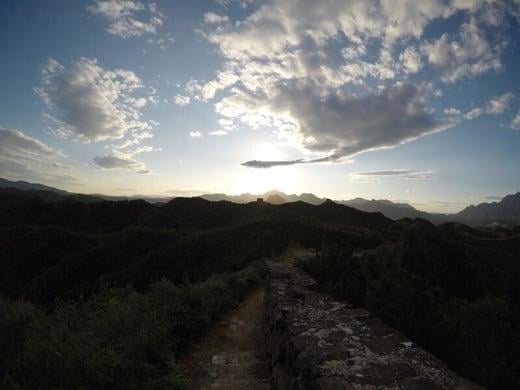Gubeikou Great Wall Overview
The geographical characters made Gubeikou section as a battle field for hundreds of years. To the west of the pass are the Chaohe River and the Wohu Mountain, and to the east is the Panlong Mountain. From ancient times, Gubeikou has served as a route of strategic importance, linking the southern and northern areas of the Yanshan Range. Set along the Yanshan Mountain range, Gubeikou Great Wall occupies a strategically important location which is difficult to access. As early as 2,500 years ago, a fortification was built here and was constantly reinforced throughout the following dynasties.
This section has 143 beacon towers, each positioned at an average interval of 156 meters. The nearest two are only 30 meters apart. The inside of these towers varies in design.
While some have a flat ceiling, others either have an arched ceiling, a domed ceiling, or an octagonal, painted ceiling.
Each tower has two floors, six archways, and ten arched doors, allowing garrisoned soldiers to advance and retreat freely. The towers are also different in size. The largest one can accommodate a garrison of 100 soldiers, and the smallest one a garrison of 10 soldiers. The towers often have one to six portholes.
Wohushan and Panlongshan Sections
Wohushan Part
The Wohushan length of Great Wall is 4.8 km long, west of Gubeikou Town. The highlight of Wohushan are the 'Sister Towers', two watchtowers that stand close to each other. At the river side, these two towers look like two sisters standing by the river hand in hand.
Panlongshan Part
The Panlongshan part of Gubeikou's Great Wall is about 5 km long, east of Gubeikou Town. Panlongshan was once said to include Jinshanling and Simatai West. General Tower and 24-Eye Tower are the highlights of the Panlongshan Wall.
General Tower
On Gubeikou Great Wall, the General Tower is the most famous. It is located at the commanding elevation of Panlongshan Mountain, from where wars were directed. There are four arrow windows on the north and south sides respectively, while each of the east and west sides have three.
24-Eye Tower
24-Eye Tower is about the 20th tower on Gubeikou East, and the highest at over 400m altitude, presiding over Longyukou pass. The first 2 km of Gubeikou's wall from the town has virtually no towers standing.
24-Eye Tower had 24 observation windows, six on each side, which was rarely seen at other sections. But only the west and south walls remain. Hikers continue from there to the Jinshanling section, as it at the east end of Gubeikou, where it meets Jinshanling at Longyukou.



